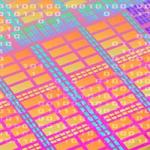
Research Topics
My lab focuses on studying the pathophysiological properties of genetic mutations associated with Parkinson's disease (PD) and ALS using a combination of in vivo mouse modeling and in vitro neurobiological approaches. While most of PD and ALS cases are sporadic, a small fraction is inherited. The specific genetic defects underlying the familial forms of diseases may provide valuable molecular handles for elucidating the pathogenic mechanisms of the diseases. Following this principle, we have generated a series of novel mouse genetic models for PD and ALS to investigate the pathophysiological phenotypes of various PD and ALS-related genetic mutations and test potential therapeutics. Currently, we focus our research on the functions and pathogenic mechanisms of alpha-synuclein and LRRK2 in PD, VAPB in ALS, and dynactin p150glued in Perry syndrome, a subtype of PD with severe mental depression. We are actively exploring the underlying molecular and cellular mechanisms of these genetic mutations in vivo and in primary neuronal cultures using a variety of histology, electrophysiology, cell biology and biochemistry approaches. Meanwhile, we also take advantage of newly developed RNA sequencing techniques to systematically identify molecular networks critical for the degeneration of nigrostriatal dopaminergic (DA) neurons.
In addition, we are keen to develop and utilize new optogenetics tools to map the basal ganglion DA circuits that are selectively affected in PD. In this regard, We are particularly interested in establishing the deep brain imaging system to study the neuron activity of basal ganglion DA circuits in PD-related mouse models. This new brain imaging approach may not only allow for early detection of disease-related preclinical alterations of DA transmission, but also for quick testing the efficacy of potential therapeutic interventions. We expect this highly integrated interdisciplinary research strategy may bring new insights into the pathogenic mechanisms of PD and ALS, while also providing new biomarkers and therapeutic targets for diagnosis and treatment of these devastating illnesses.
Biography
Dr. Huaibin Cai received his B.S. in Biology in 1991 from Peking (Beijing) University, Beijing, China, and his Ph.D. in Neuroscience in 1999 from the Johns Hopkins University School of Medicine in Baltimore, Maryland. He performed his postdoctoral training from 1999 to 2000 in the Division of Neuropathology, Department of Pathology at the Johns Hopkins University School of Medicine and was promoted to Research Associate in 2000. He joined the NIA Laboratory of Neurogenetics in 2003 as a Tenure-track Investigator and was appointed as a tenured Senior Investigator in 2011 to head the Transgenics Section. He also serves as the deputy Chief of Laboratory of Neurogenetics starting in 2023.
Selected Publications
- Dong J, Wang L, Sullivan BT, Sun L, Martinez Smith VM, Chang L, Ding J, Le W, Gerfen CR, Cai H. Molecularly distinct striatonigral neuron subtypes differentially regulate locomotion. Nat Commun. 2025;16(1):2710.
- Liu Z, Yang N, Dong J, Tian W, Chang L, Ma J, Guo J, Tan J, Dong A, He K, Zhou J, Cinar R, Wu J, Salinas AG, Sun L, Kumar M, Sullivan BT, Oldham BB, Pitz V, Makarious MB, Ding J, Kung J, Xie C, Hawes SL, Wang L, Wang T, Chan P, Zhang Z, Le W, Chen S, Lovinger DM, Blauwendraat C, Singleton AB, Cui G, Li Y, Cai H, Tang B. Deficiency in endocannabinoid synthase DAGLB contributes to early onset Parkinsonism and murine nigral dopaminergic neuron dysfunction. Nat Commun. 2022;13(1):3490.
- Wu J, Kung J, Dong J, Chang L, Xie C, Habib A, Hawes S, Yang N, Chen V, Liu Z, Evans R, Liang B, Sun L, Ding J, Yu J, Saez-Atienzar S, Tang B, Khaliq Z, Lin DT, Le W, Cai H. Distinct Connectivity and Functionality of Aldehyde Dehydrogenase 1a1-Positive Nigrostriatal Dopaminergic Neurons in Motor Learning. Cell Rep. 2019;28(5):1167-1181.e7.
- Liu G, Yu J, Ding J, Xie C, Sun L, Rudenko I, Zheng W, Sastry N, Luo J, Rudow G, Troncoso JC, Cai H. Aldehyde dehydrogenase 1 defines and protects a nigrostriatal dopaminergic neuron subpopulation. J Clin Invest. 2014;124(7):3032-46.
- Parisiadou L, Yu J, Sgobio C, Xie C, Liu G, Sun L, Gu XL, Lin X, Crowley NA, Lovinger DM, Cai H. LRRK2 regulates synaptogenesis and dopamine receptor activation through modulation of PKA activity. Nat Neurosci. 2014;17(3):367-76.
Related Scientific Focus Areas


Social and Behavioral Sciences
View additional Principal Investigators in Social and Behavioral Sciences

Molecular Biology and Biochemistry
View additional Principal Investigators in Molecular Biology and Biochemistry


This page was last updated on Wednesday, August 13, 2025